When Was the First Black Barbie Made? All About the Doll's History
Netflix’s 'Black Barbie' tells the story of how the first Black Barbie came to be — and the lasting impact she left behind
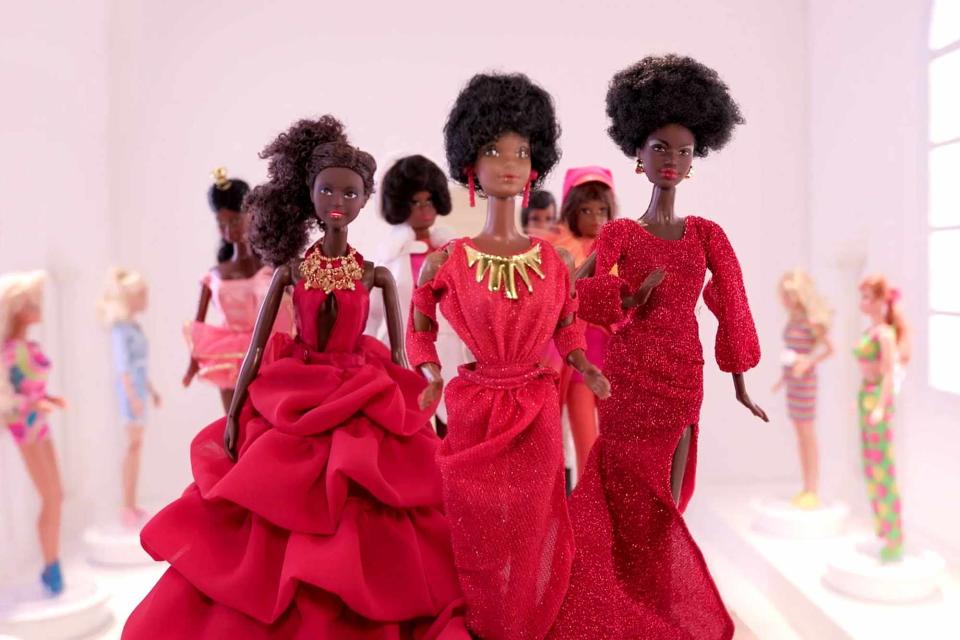
Courtesy of Netflix
'Black Barbie'.Barbie dolls first hit the shelves in 1959 — but it would take more than two decades for an official Black Barbie to make its debut.
The concept of a Black Barbie doll was first floated at Mattel almost immediately after Barbie herself was created. The company responded in the late 1960s with a handful of Black dolls that were designed to be Barbie’s sidekick (not the star of the show). The dolls also featured the same exact design as Barbie, just in a darker skin tone — not providing an accurate depiction of a Black woman and her features.
It wasn’t until 1980 that the first official Black Barbie would emerge, with the Barbie name and distinct features. “She’s Black! She’s beautiful! She’s dynamite,” the box read for the doll, which was an instant hit. But Black Barbie wasn’t just a sales success for Mattel: She was a doll that would permanently change the toy landscape for children everywhere. And now, Black Barbie, a new Netflix documentary from Shonda Rhimes debuting on June 19, is here to tell the story of how Black Barbie came to be — and the lasting legacy she’s left behind.
“I knew Black Barbie was different, but I never realized the magnitude,” Black Barbie’s creator, Kitty Black Perkins, said in the documentary’s trailer.
In light of Black Barbie’s debut, here is a look at the history of the trailblazing doll — and the Black women who made her a reality.
Who made the first Black Barbie?
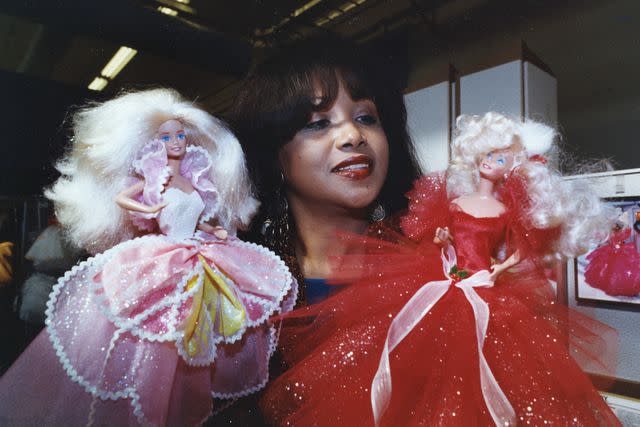
LARRY BESSEL / LOS ANGELES TIMES / Getty
Kitty Black Perkins shows off two of her glittering creations for Barbie dolls at the Mattel offices in El Segundo, CA. on January 29, 1991.The brainchild behind the first Black Barbie is Kitty Black Perkins — a South Carolina woman who, ironically, never owned a Barbie doll growing up.
Born in 1948 in Spartanburg, S.C., Perkins was the daughter of a housekeeper and a chef, according to Greenville News. She and her siblings “grew up modestly,” Perkins told the outlet in 2019 — and never had Barbie dolls in their four-room house.
Not only could her family not afford Barbies, but Perkins also never had any Black dolls to play with growing up. However, Perkins took that matter into her own hands.
“I would actually color the skin of the paper dolls,” she told CBS News in 2024. “I wanted them to look like me.”
Perkins displayed an interest in fashion from a young age, too, admiring her father’s “spectacular” style and learning how to sew from her mother and grandmother, per the Greenville News. She made dress patterns from old newspapers and began to create her own outfits as a young girl. After graduating from high school, Perkins left Spartanburg for the first time and moved to Los Angeles, where she attended Los Angeles Trade Tech College to study fashion design.
Perkins earned her associate’s degree in 1971 and began working for a couture designer. Five years later, she answered an ad in the newspaper for an unnamed company seeking a fashion designer. The company was Mattel and the job was designing clothes for Barbie, Perkins learned, and the interview required her to create an outfit for the famous doll.
“After knowing I was going on an interview, I went to Toys R’ Us and I purchased my very first Barbie doll,” Perkins recalled to Greenville News. She was 28 years old.
Perkins designed six outfits for her interview and instantly impressed the hiring director. She landed the job, becoming the first Black designer for Barbie in 1976 — and all six of the outfits she designed for her interview were put into production that year.
Why did Perkins create the first Black Barbie?
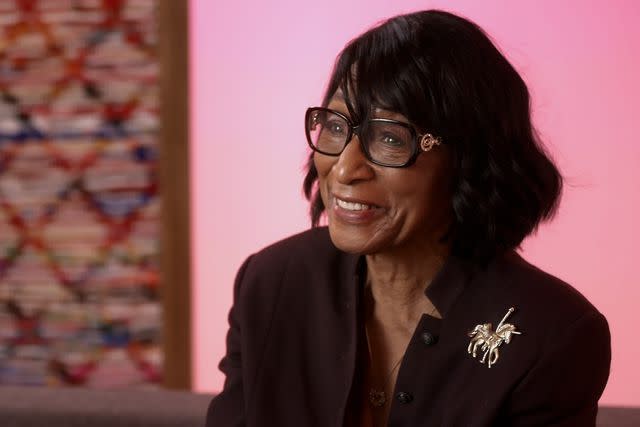
Courtesy of Netflix
Beulah Mae Mitchell in 'Black Barbie'.Soon after Barbie was first introduced in 1959, Beulah Mae Mitchell, a Black line worker at Mattel, suggested the idea of a Black Barbie to Barbie’s creator Ruth Handler.
“That was a little act of revolution,” Dr. Patricia Turner, an African American studies professor and dean of UCLA College, said in the Netflix documentary Black Barbie.
Civil rights activists and critics also called out Mattel from the get-go for only creating the doll in fair skin tones, according to the Museum of Play. Mattel’s response was to create Black companions for Barbie, including “colored Francie” in 1967, Christie and Julia in 1969 and Cara in 1975. However, none of those dolls bore the “Barbie” name — and they also lacked traditionally Black facial features, with critics describing them as “brown plastic poured into blonde Barbie’s mold.”
With critics and collectors demanding more diverse dolls, Perkins was tasked in 1979 with creating the first Black Barbie — who was not only named Barbie, but was also designed to resemble real Black women.
“When I designed this doll, there was a need for the little Black girl to really have something she could play with that looked like her,” Perkins said in the Netflix documentary.
When did Black Barbie dolls come out?
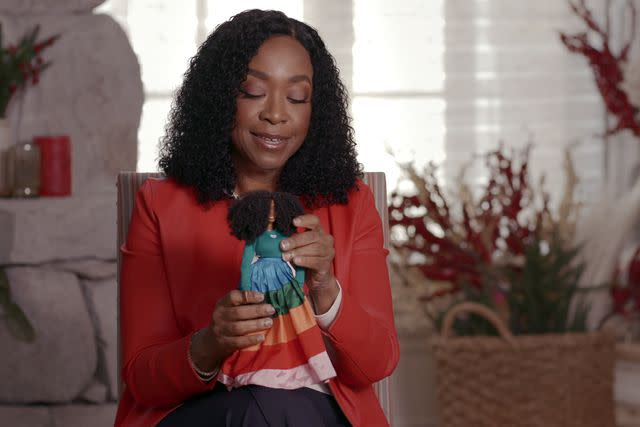
Courtesy of Netflix
Shonda Rhimes in 'Black Barbie'.Perkins’ Black Barbie officially hit store shelves in 1980, 21 years after the original Barbie doll debuted. The original packaging for Black Barbie read: “She’s Black! She’s beautiful! She’s dynamite!”
“Everything Barbie was, I wanted Black Barbie to be the opposite,” Perkins told CBS News. “I wanted her to be able to do the same things that the White doll did, but just add a little more spice.”
Specifically, according to the Netflix documentary, Perkins wanted to ditch the traditional Barbie look of long cascading hair and a full, princess-like ball gown. She worked with a Barbie hair designer and sculptor — who were also Black themselves — to create a short, natural Afro for Black Barbie and features that included fuller lips and a wider nose.
“I wanted her just to reflect the total look of a Black woman,” Perkins shared in Black Barbie. “I gave her bold colors, bold jewelry, short hair and a wrap skirt that could actually show skin.”
What other Black Barbies are there?
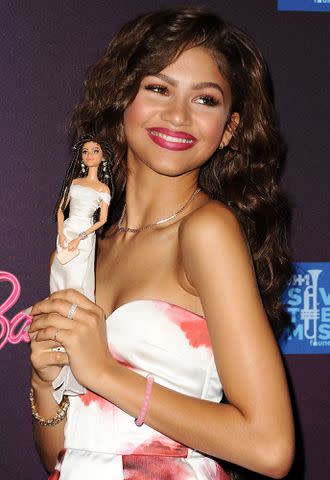
Jason LaVeris/FilmMagic
Zendaya attends the Barbie Rock 'N Royals concert experience at Hollywood Palladium on September 26, 2015 in Los Angeles, California.Following the success of Black Barbie, Perkins developed the first exclusive line of Black dolls for Barbie in 1991. Called Shani and Friends, the doll line featured three characters — Shani, Asha and Nichelle — with varying skin tones, hair colors and textures.
“Shani is going to be our entry into the ethnic marketplaces,” Deborah Mitchell, a product manager for Mattel, said in archival footage shown in the Netflix documentary. “It’s going to be heavily marketed, which is also a first because, currently, there isn’t any African American doll line that receives its own commercial, that receives its own print ad and support, that will receive a PR focus and promotional tie-ins that we’ve developed.”
Shani and Friends were discontinued in 1993, but were followed up by the Asha Barbies — a trio of Black Barbies wearing fashion inspired by African textiles — in 1994. The 1990s also saw the creation of Kenyan and Ghanaian Barbies, as well as Tangerine Twist Barbie, who was described as “today’s African American woman — glamorous, exciting and confident.”
Over the years, more Black Barbies were designed thanks to Perkins and one of her protegés at Mattel, a Black designer she hired named Stacey McBride-Irby. McBride-Irby created the So In Style (S.I.S) line of Black Barbie dolls in 2009, which were inspired by her own young daughter.
“I wanted to give her dolls that looked like her, reach girls in my community and give them dolls that they could relate to,” McBride-Irby said in footage shown in Black Barbie.
Several famous and prominent Black women have had their own Barbie dolls fashioned after them, including Tina Turner, Laverne Cox, Naomi Osaka, Yara Shahidi, Gabby Douglas, Ibtihaj Muhammad, Zendaya, Ava DuVernay, Misty Copeland and Beyoncé.
Related: Do These Barbie Dolls Actually Look Like the Stars They're Supposed to Resemble? You Decide
What was Black Barbie’s impact?
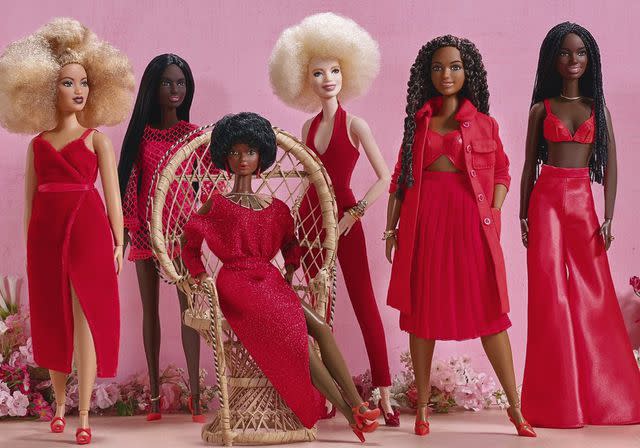
Courtesy of Netflix
'Black Barbie'.Ever since her debut in 1980, Black Barbie has become a symbol of progress — not just in the toy industry, but in society as well. The doll helped to correct decades of Black girls and women not having toys to play with that looked like them.
“I do think that there is damage done when you force children of color to play with White dolls,” Rhimes said in the documentary.
“Crowning this doll as Barbie ... was telling the world Black is beautiful too,” Dear White People star Ashley Blaine Featherson-Jenkins added. “I’m so grateful that we are included now in the legacy of that.”
Black Barbie also emerged at a time when the formal years of the civil rights movement in the 1950s and 1960s were coming to an end. “It’s probably not a coincidence that the first Black Barbie emerged when she did,” Turner told Today in 2023. “The '80s gets us out of the formal years of the civil rights movement.”
As a result, Mattel began to create more Black Barbies in a variety of careers to give children more diverse icons to look up to — including a Black Barbie pilot in 1989, a Black Barbie Navy Admiral, medical sergeant and firefighter in 1990s, and a Black Barbie president in 2004.
Barbie has also continued to find more ways to be inclusive since Black Barbie’s debut in the 1980s. In addition to representing multiple races and ethnicities, the company has since created Barbies with Down Syndrome, in wheelchairs and with prosthetic limbs, among others, to make all children feel seen in their dolls. The Barbie doll line is now considered “the most diverse doll line on the market,” according to a 2023 statement from Mattel.
For more People news, make sure to sign up for our newsletter!
Read the original article on People.

 Yahoo Lifestyle
Yahoo Lifestyle 
